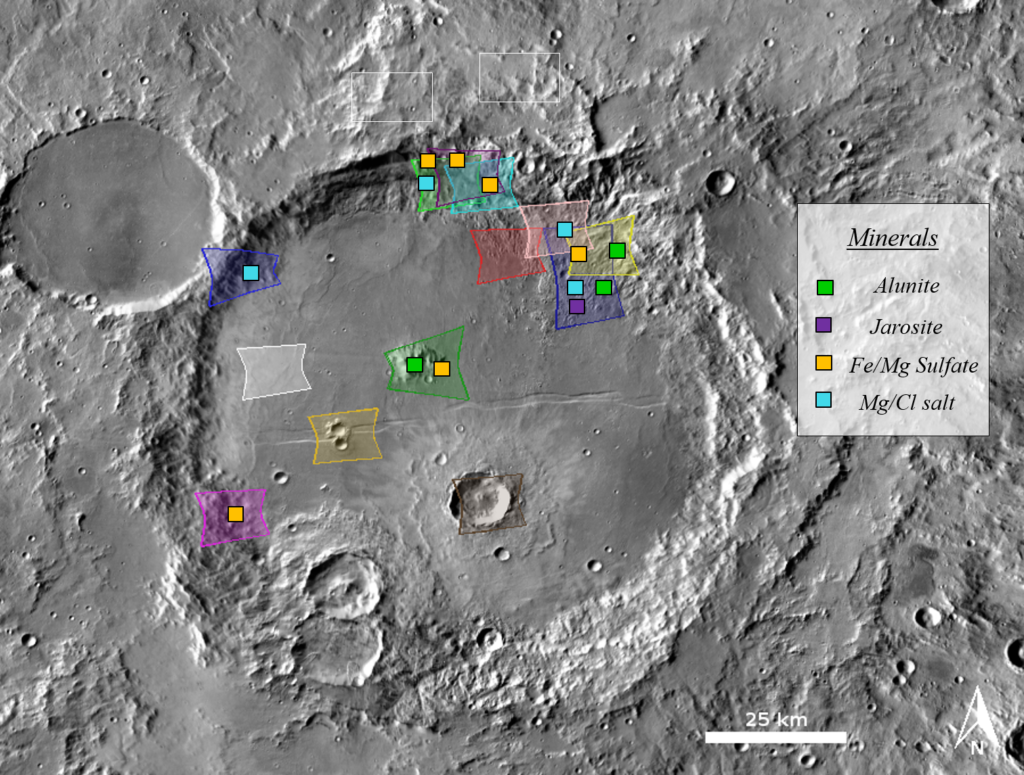
Salts in Columbus Crater, Mars. Colored hexagons are footprints of spectral images from the Mars Reconnaissance Orbiter. Colored squares depict where different salts were detected. Mg/Fe sulfates with patches of Mg/Cl salts are a widespread unit, while K-bearing sulfates are rare and occur in isolated areas.
In a recent live stream presentation, Lowell Observatory astronomer Jennifer Hanley talked about salts in the solar system. She specifically looked at Mars and Jupiter’s moon Europa. This research is compelling, especially because of its potential application in searching for life on other worlds.
Salts such as the chlorine-based chlorates and perchlorates that Hanley studies are formed in liquid environments. Their occurrence thus indicates the presence of liquid water at some point in the past. Scientists can also infer characteristics of the water based on their presence. For instance, salts can lower freezing temperatures. This is why we salt roads in winter—the salt lowers the water’s freezing point so the ice melts.
Salts can also increase the boiling point of substances. The boiling point of water, for instance, is 212°F at sea level but decreases by 1°F for every 500-foot increase in elevation. At Lowell Observatory, where the elevation is about 7200 feet, water boils at around 198°F. This lower temperature means preparing food will take longer. This is why cooks in such places add salt to water, to get the cooking time similar to that at sea level.
Mars and Implications for Life in the Solar System
Similarly, chlorine salts on Mars can lower the freezing point of pure liquid water from 273 K (0°C/32°F) down to 204 K (-69°C/-92°F). Liquid water currently can’t exist on the Martian surface, due to the specific atmospheric pressure and temperature. But erosional and depositional artifacts suggest water in the past, and the presence of salts adds further support to this premise. The perimeter of Columbus Crater, for instance, is ringed by salt. Scientists such as Hanley believes a once-salty lake evaporated and left the bathtub-like ring behind.
So what does this have to do with searching for life? Water is a basic requirement for life as currently understood. The presence of salts thus indicates one of the conditions necessary for life. There are many other controlling factors, such as cosmic radiation, temperature, etc. But finding evidence of water helps narrow down the search. Somewhere in the heavens, Percival Lowell must be smiling. He famously suggested intelligent life existed on the Red Planet. His evidence: a network of supposed waterways that he called canals (which scientists know today don’t actually exist).
To watch Hanley’s presentation about salts in the solar system, go to: https://www.youtube.com/watch?v=LrBndY-UapM.